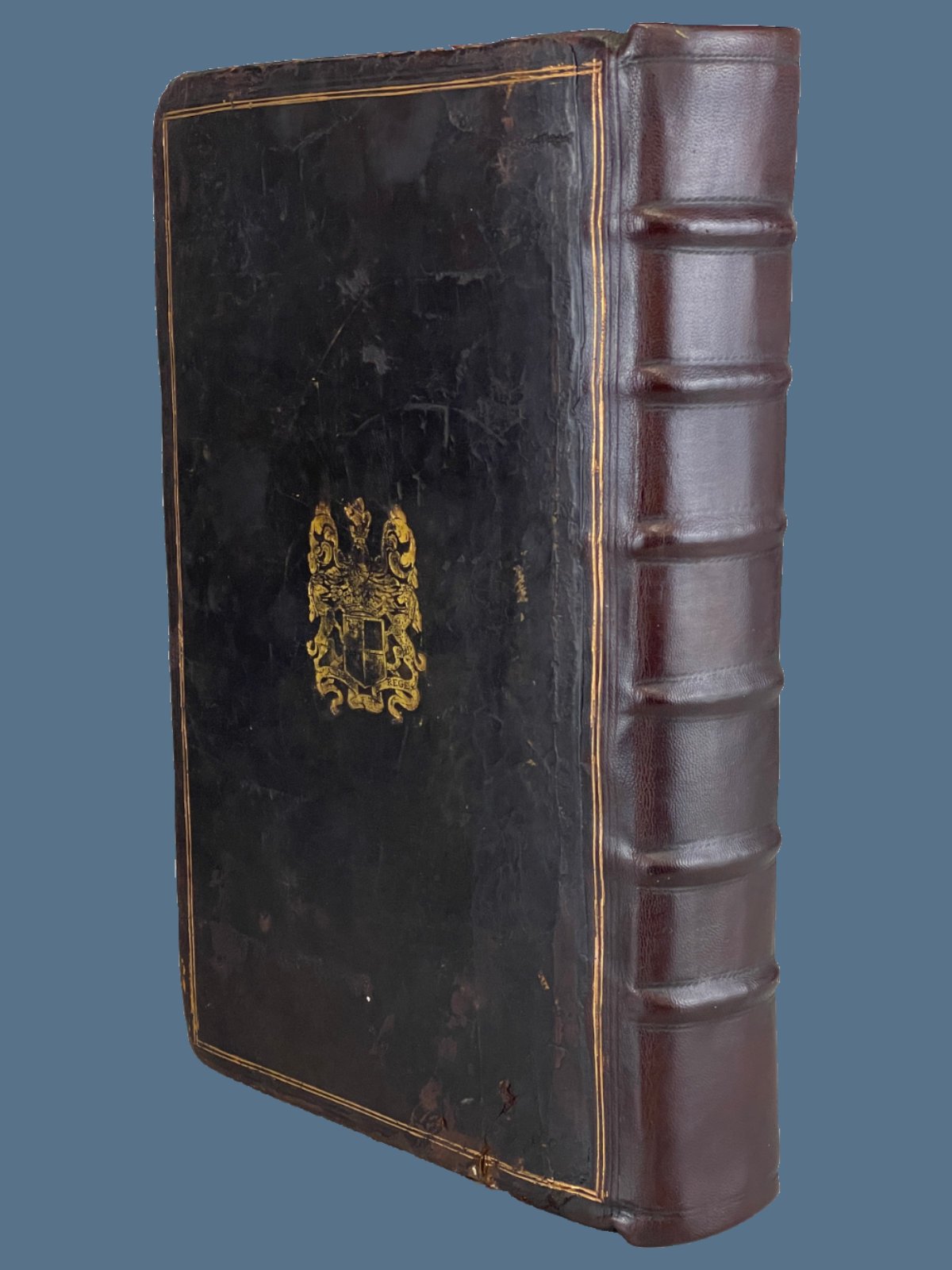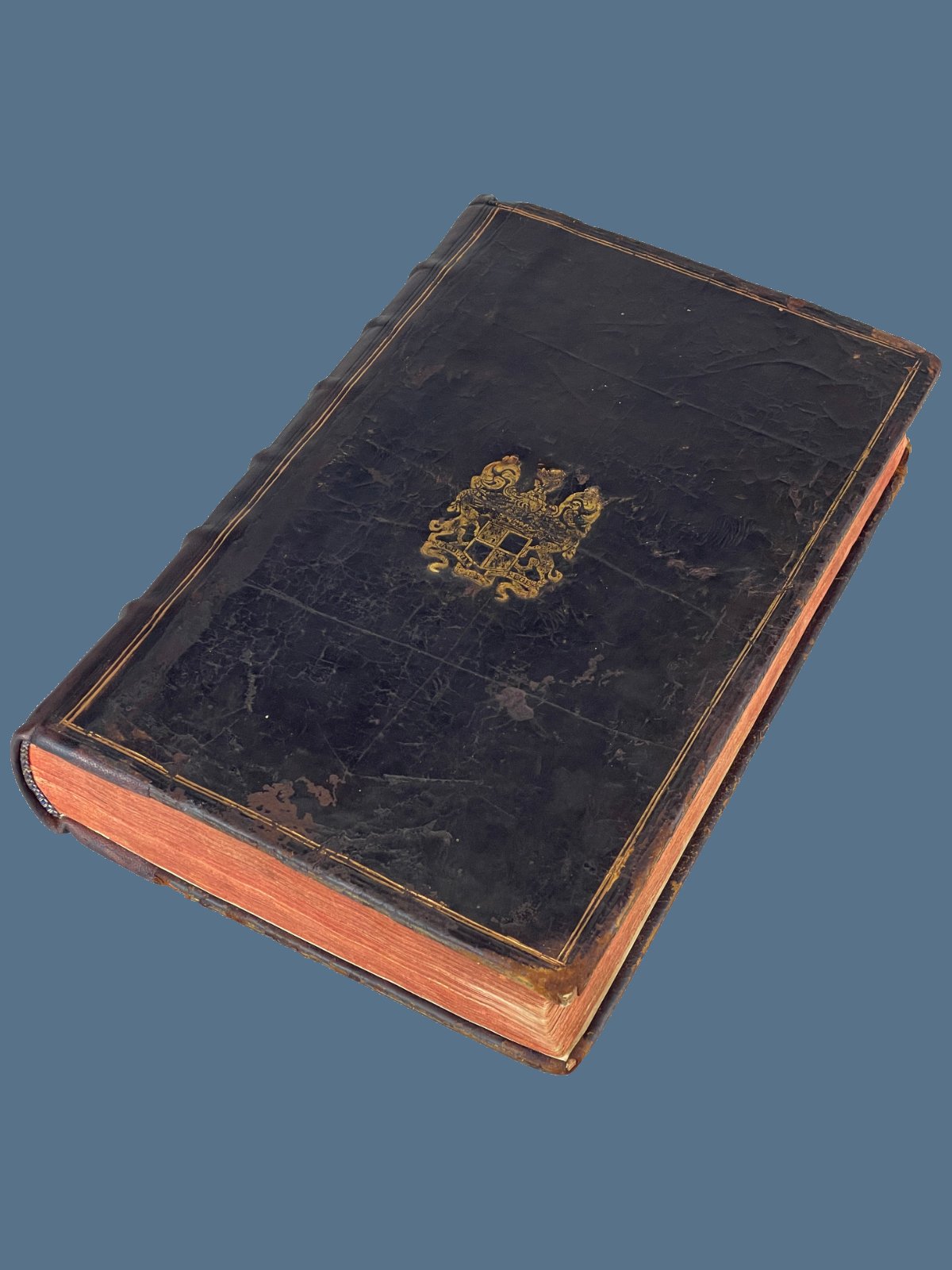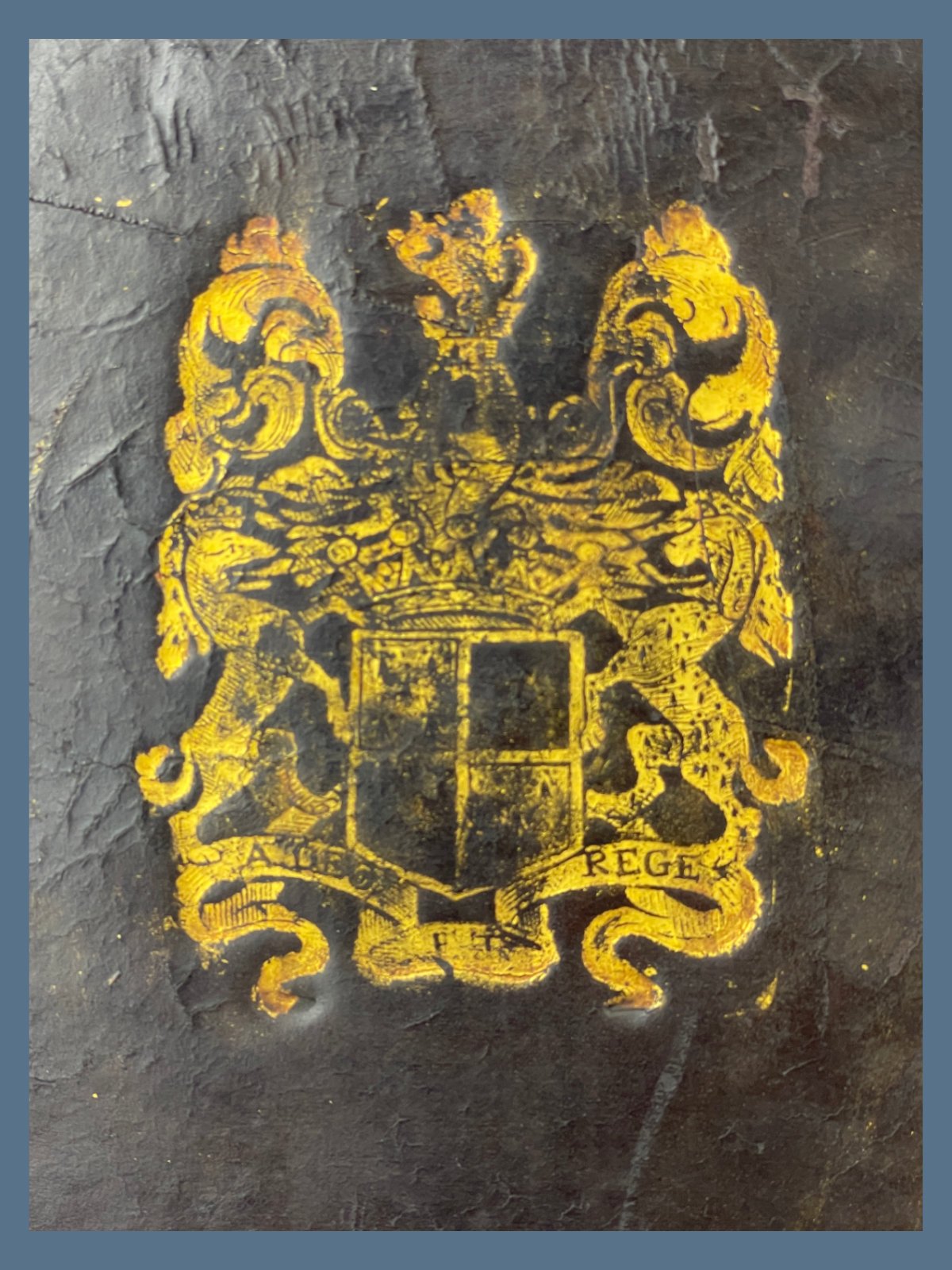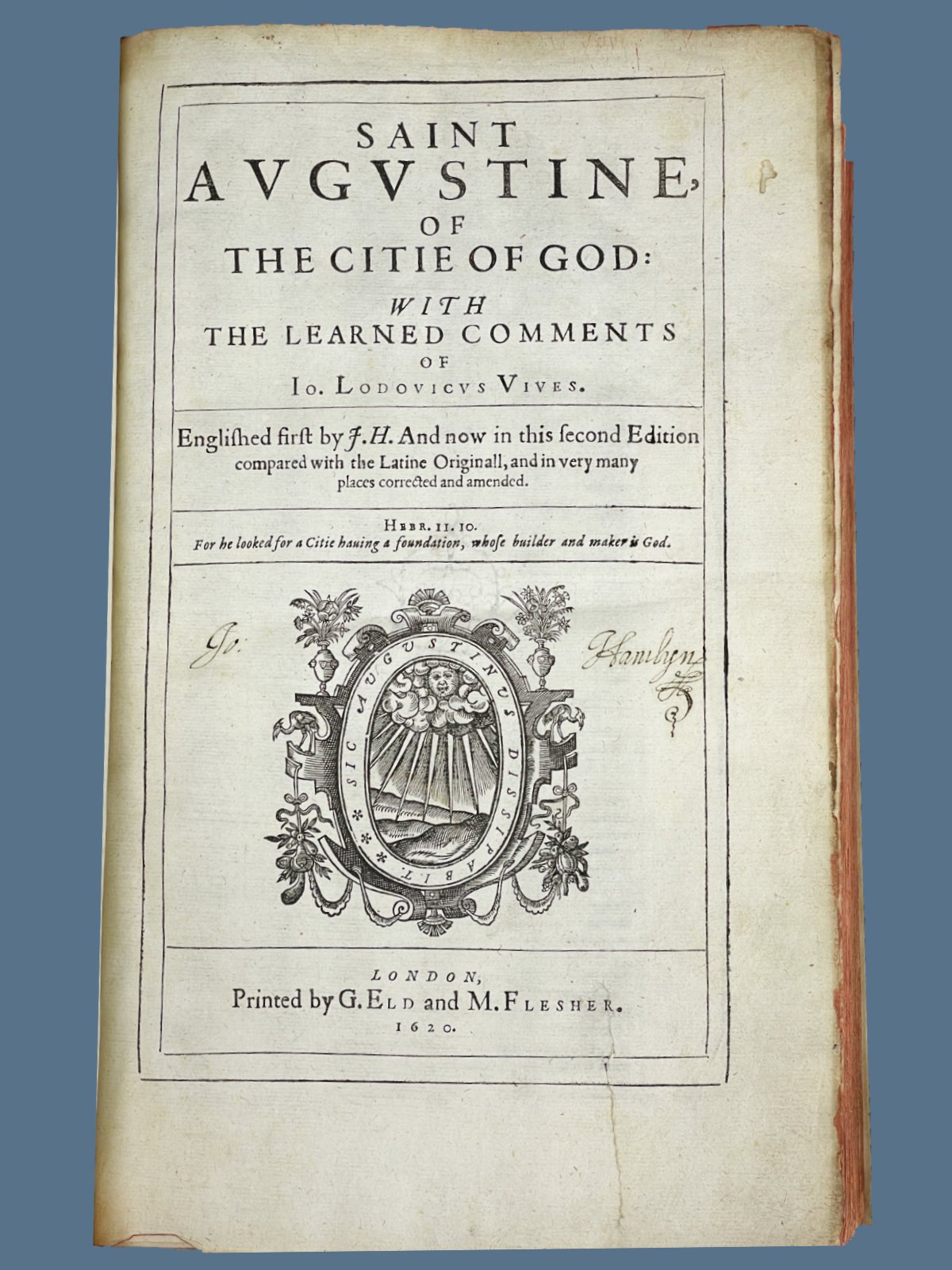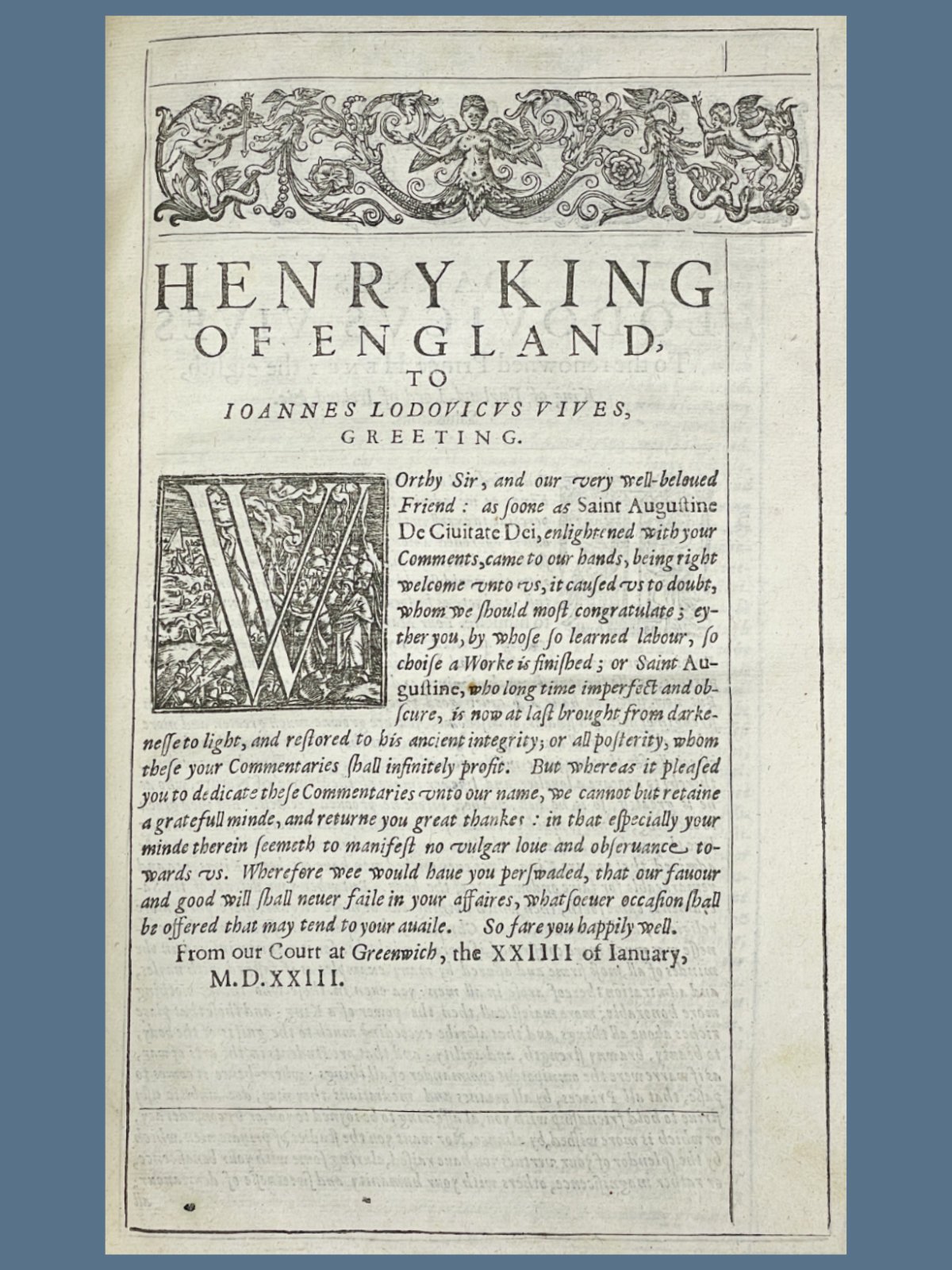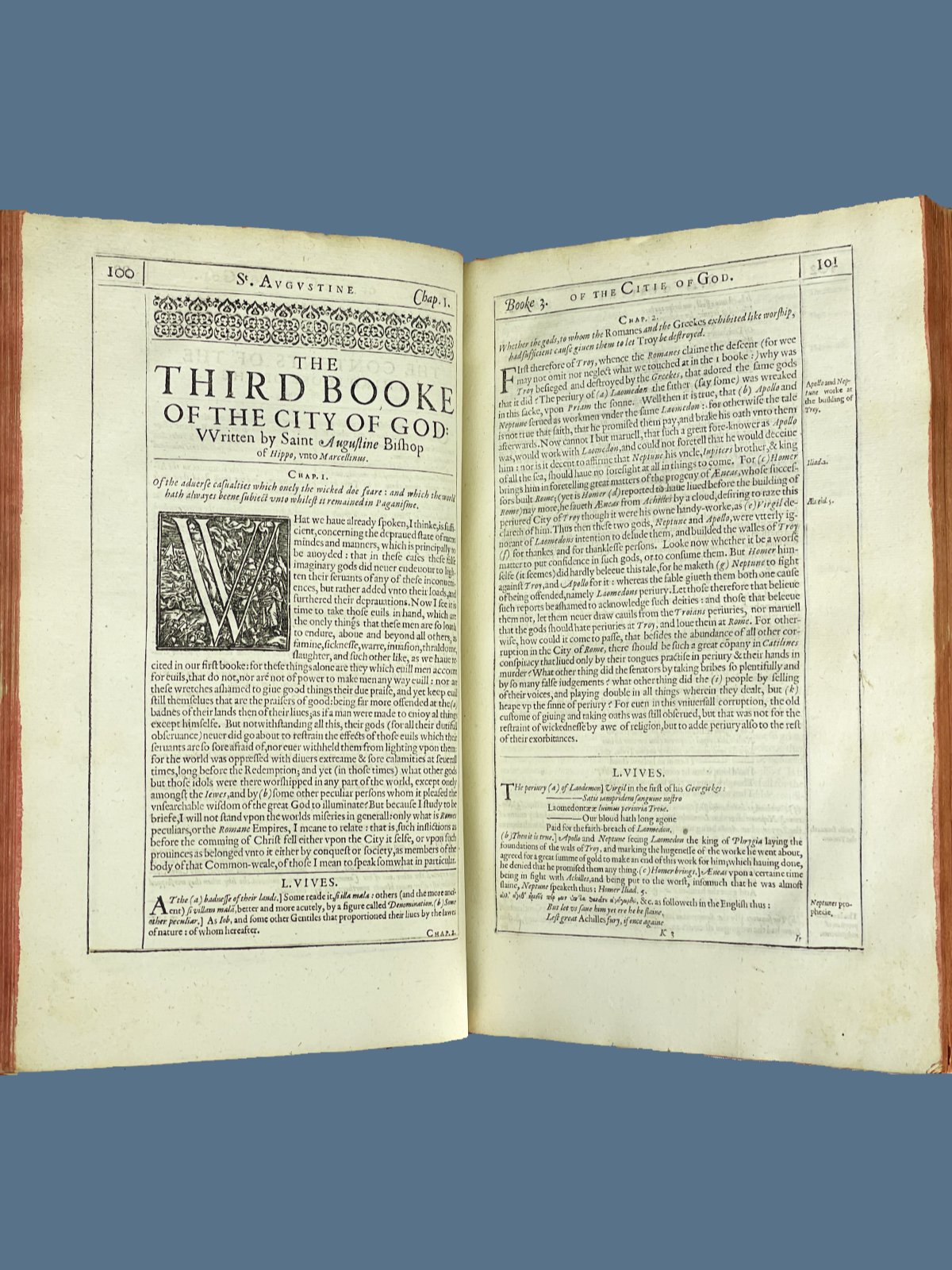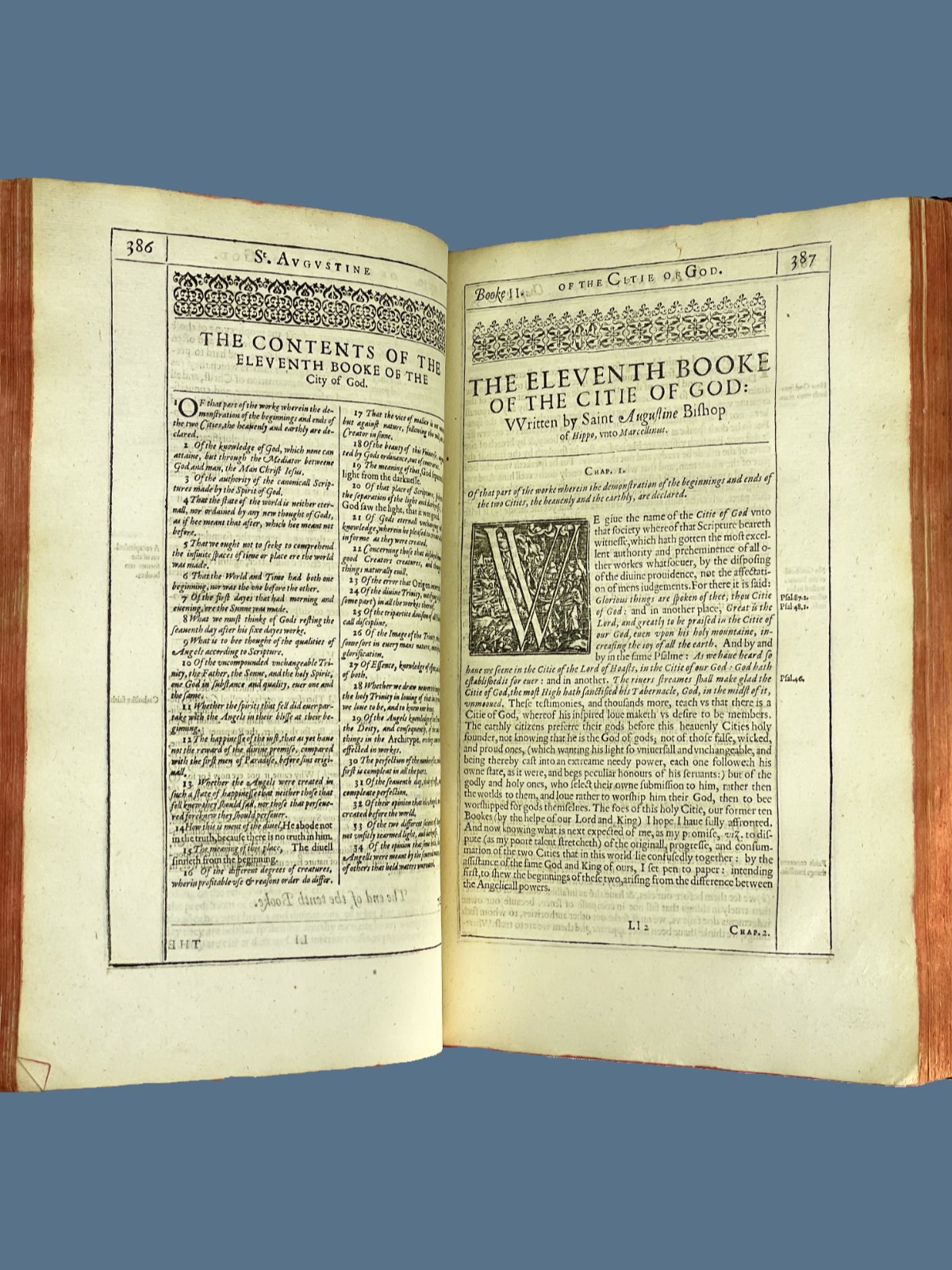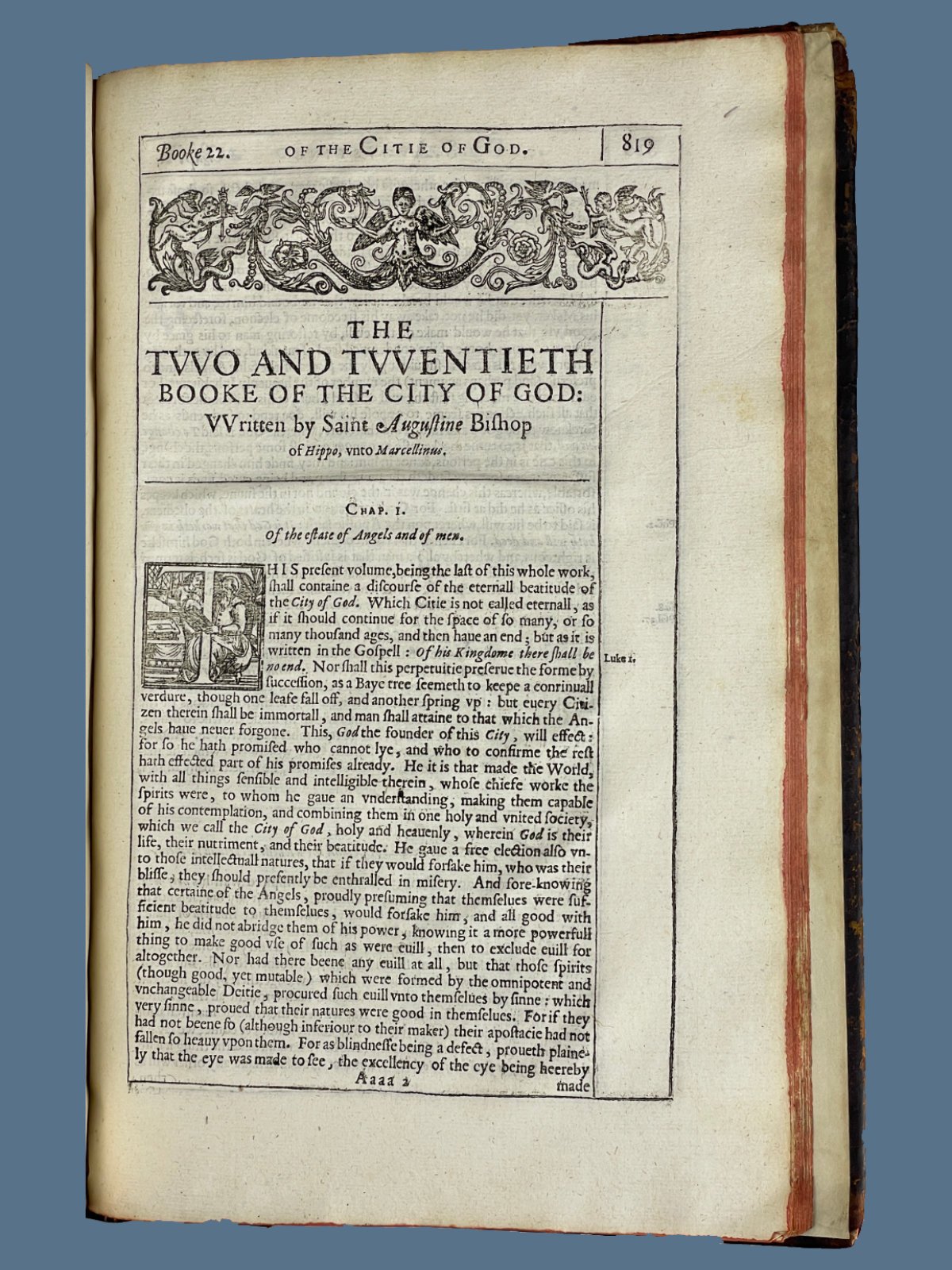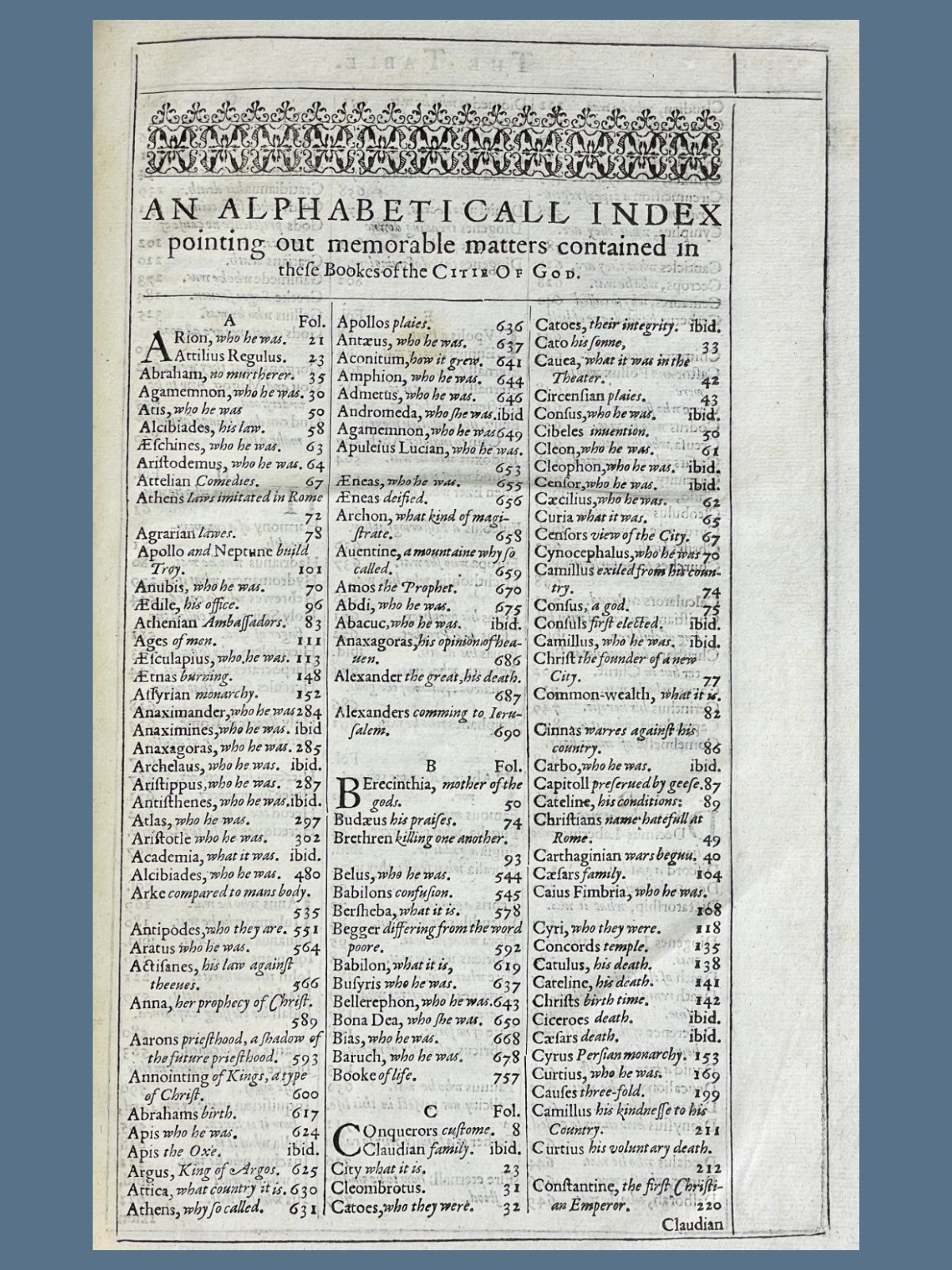1620 Of the Citie of God by Saint Augustine
Key Features
Armorial Binding
Size: Folio (13.5” x 9”)
Author: Saint Augustine of Hippo
Font: Single Column Roman
Binding: Rebacked Paneled Calf
Provenance: George Stanhope, Earl of Chesterfield
Printer: G. Eld and M. Flesher, London
SKU: P55
Of the Citie of God: With the Learned Comments of Jo. Lodovicus Vives. Englished first by J.H. and now in this Second Edition compared with the Latine Originall, and in very many places corrected and amended.
Description
The second edition (first in 1610) in English of “The City of God” by St. Augustine of Hippo (354-430 AD), translated by John Healy, and revised by William Crashaw. The text includes the commentary of Juan Luis Vives written at the suggestion of Erasmus.
A monumental work of Christian theology and philosophy composed in response to the sacking of Rome by the Visigoths in 410 AD, a traumatic event that led many to question the efficacy of Christianity in the face of such worldly calamity. Augustine's primary aim is to address these doubts and provide a theological framework for understanding the relationship between the earthly city (the City of Man) and the heavenly city (the City of God).
The first five books deal with the polytheism of Rome, the second five with Greek philosophy, and the last twelve books with the history of time and eternity as set out in the Bible. Augustine addresses demons and demonic influence in books eight and nine. Text within ruled border. Each book begins with a one-page overview, decorative headpieces and initials.
Collation
[par]^4 (-[par]1), A-Z^6, Aa-Zz^6, Aaa-Zzz^6, Aaaa-Dddd^6. Lacks first blank leaf only.
Pagination
[xviii],861[i.e. 860],[4] pp.
Binding
Newly backed brown goatskin with nineteenth century near matching gilt-lined calf to covers. Boards with armorial stamp of George Philip Stanhope (1822-1883), Earl of Chesterfield. Spine with six raised bands. Contemporary plain endpapers. All edges red.
Condition
Remarkably clean and crisp throughout. General title with small wormhole and closed tear without loss; C2 small hole costing one letter and signature mark only; P5, Ccc4 small lower marginal loss; Bbbb6 short, closed tear to gutter without loss; rubbed; worn to corners and edges with the former bumped; hinges reinforced.
Provenance
“Jo Hamlyn” in neat contemporary hand on title page; Sam Burns (1922) on recto of front endpaper; Armorial stamp of George Philip Stanhope (1822-1833) on both boards. Stanhope was the eight Earl of Chesterfield and resided at Rockwood, Strabane, Ireland.
Note
“For Augustine, history is understood as a continuous evolution of the divine purpose and all forces work towards redemption of man by God’s grace, the central feature of Augustine’s theology. It is for this reason that he is considered as the founder of the new science, to which Voltaire assigned the name ‘philosophy of history’. For the first time a comprehensive survey of human history is presented. History, he maintained, has a goal. Salvation by God’s grace is not just a cyclical, haphazard occurrence of events. In Augustine’s view the victory of faith is historically inevitable.” (PMM)
The work has had a profound and lasting impact on Christian thought and continues to be studied and revered for its insights into the nature of the human condition and the ultimate destiny of humanity.
References
ESTC S106898; USTC 3009168; PMM 3 (1467).



